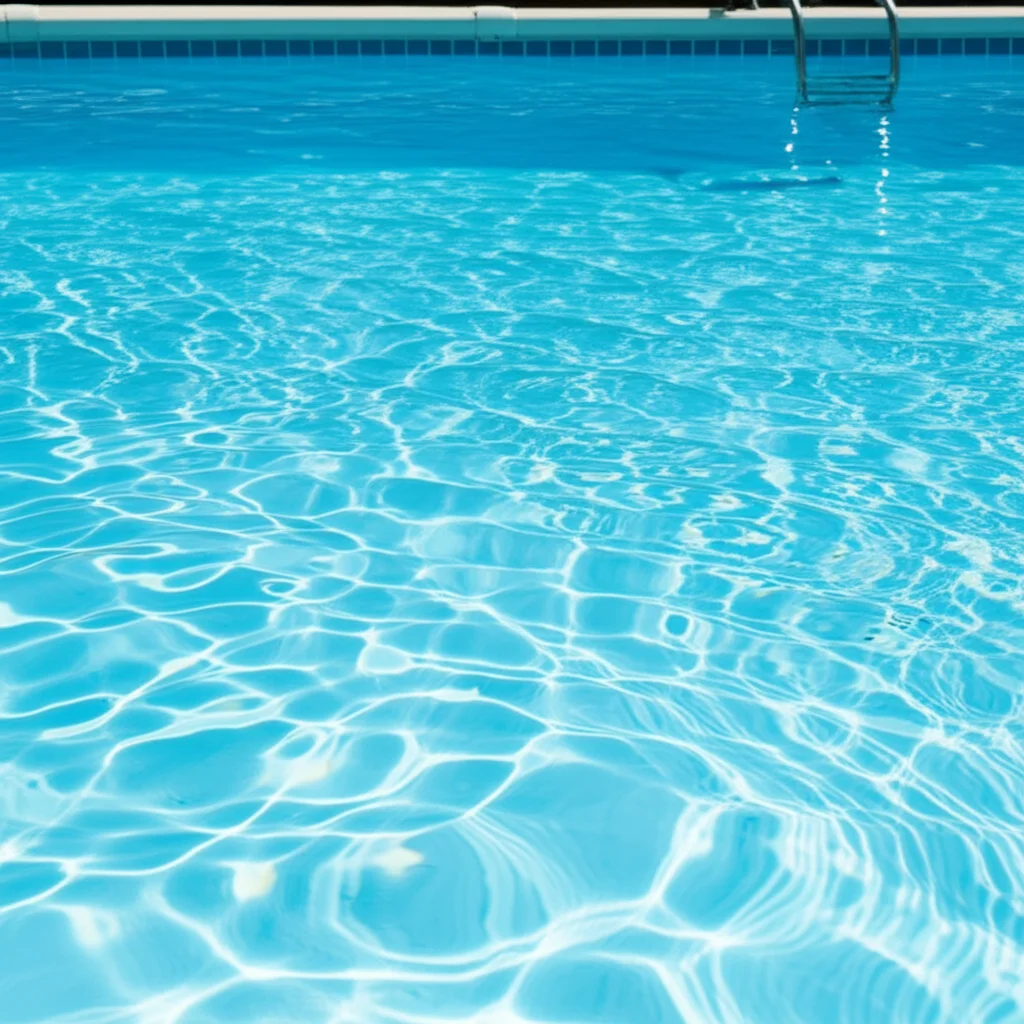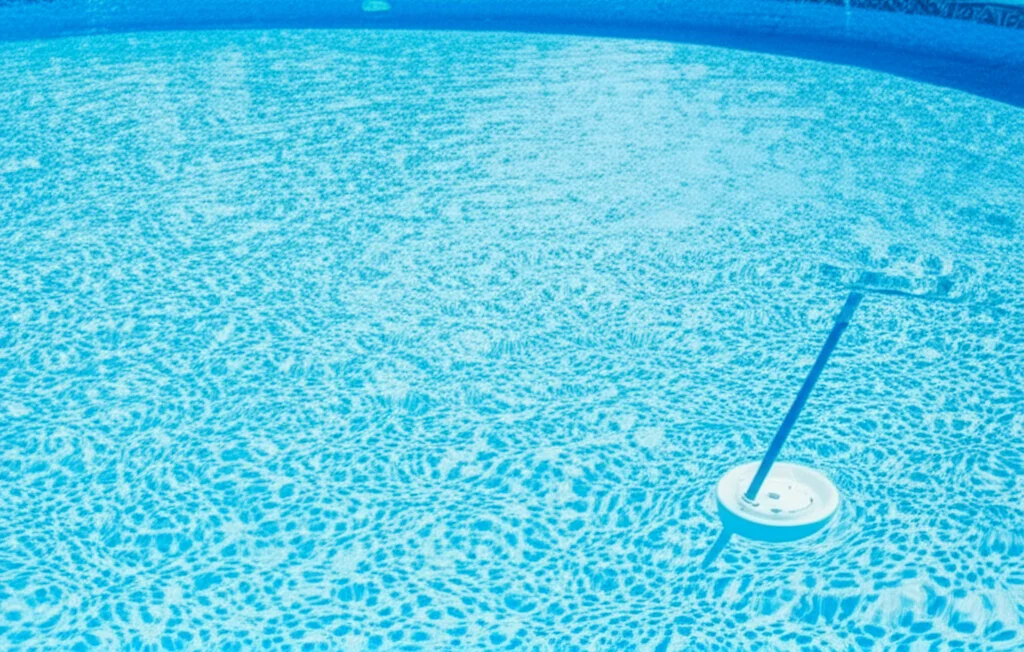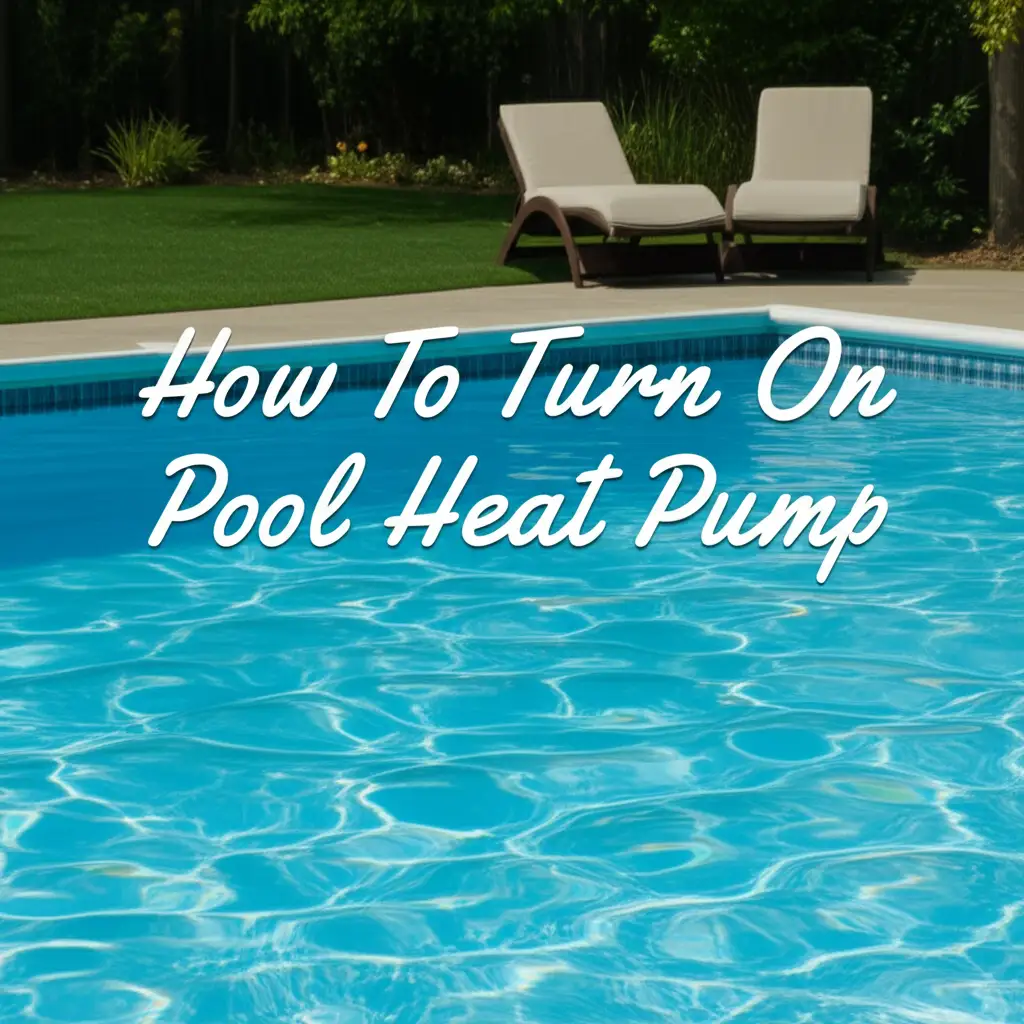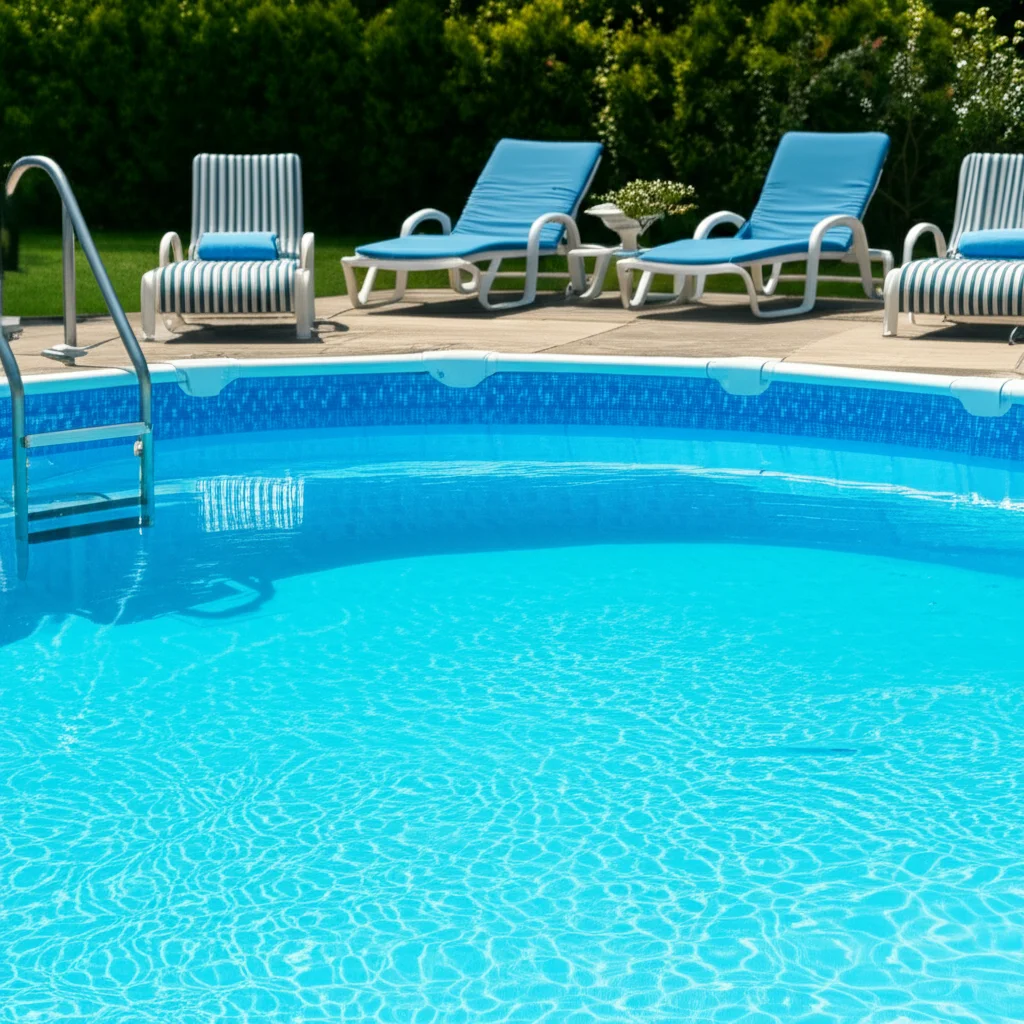· Todd Martin · Pool Maintenance · 18 min read
How To Clean Pool Walls

Sparkling Pool Walls: Your Guide to a Clean Swimming Pool
Imagine diving into crystal-clear water, its surface reflecting the sun like a jewel. But then, you notice it: unsightly grime, discolored patches, or even slippery algae clinging to your pool walls. A dirty pool wall detracts from the beauty of your backyard oasis. It also creates a less hygienic swimming environment. Learning how to clean pool walls is a core part of owning a swimming pool.
Maintaining clean pool walls is more than just aesthetics. It helps keep your water healthy and extends the life of your pool surfaces. Over time, various elements like dirt, mineral deposits, and algae can build up. These deposits affect water quality and can become harder to remove later. This guide will walk you through everything you need to know. We cover identifying common wall contaminants, selecting the right tools, and executing effective cleaning strategies. You will soon have sparkling clean pool walls.
Takeaway:
- Regularly brush your pool walls to prevent buildup and maintain water clarity.
- Address specific issues like algae and stains quickly with targeted treatments.
- Use the correct cleaning tools and methods for your pool’s surface material.
- Balance your pool’s water chemistry to minimize future wall contamination.
To clean pool walls, start by balancing water chemistry. Then, brush walls regularly with an appropriate brush for your pool surface. Address specific issues like algae with algaecide and stains with targeted cleaners. Filter debris and maintain proper sanitation for lasting cleanliness.
Understanding Pool Wall Contaminants and Why They Appear
Your pool walls face many challenges. Various substances cling to them. These substances reduce clarity and hygiene. Understanding what causes them helps you fight them effectively. Let’s look at common pool wall contaminants.
Algae is a frequent culprit. It appears in several forms. Green algae makes the water cloudy and coats surfaces with a greenish film. Black algae forms dark, resistant spots. Mustard algae, or yellow algae, appears as a powdery yellow dust. These forms of algae thrive in warm water and poor circulation. Insufficient chlorine levels also lead to algae growth.
Dirt and grime also accumulate on pool walls. These particles come from swimmers, leaves, dust, and pollen. They settle on surfaces, especially where water flow is minimal. Over time, these deposits can harden. They become more difficult to brush away. Your filter system removes much of this, but some always sticks to the walls.
Mineral deposits, like calcium scale, are another common problem. Calcium hardness in your water can lead to white, crusty deposits on pool surfaces. This is more common in areas with hard water. These deposits feel rough to the touch. They often appear at the waterline where water evaporates. Iron and copper can also leave colored stains. These appear as rust-colored spots or blue-green marks. These metals enter the pool from well water, old plumbing, or corroding equipment.
Poor water chemistry often plays a major role in these issues. Imbalanced pH, low sanitizer levels, or high alkalinity contribute to algae and stain formation. An effective filter system helps remove suspended particles. However, a dirty or undersized filter struggles to keep the water clean. This allows contaminants to settle on your pool walls. Early detection and proactive measures prevent major cleaning challenges. I always recommend testing your water regularly to catch these issues before they become big problems.
Essential Tools and Supplies for Pool Wall Cleaning
Effective pool wall cleaning requires the right equipment. Using the wrong tools can damage your pool surface. It can also make your cleaning efforts less effective. I always ensure I have these items ready before I begin.
First, consider your pool brush. The type of brush depends on your pool’s surface material. For vinyl or fiberglass pools, a soft nylon brush is best. It cleans gently without scratching. Plaster or concrete pools can handle a stiffer, stainless steel brush. This type of brush removes tougher stains and algae more effectively. However, never use a stainless steel brush on vinyl or fiberglass. It will cause damage.
A telescopic pole is indispensable. It attaches to your brush, skimmer net, and vacuum head. This pole allows you to reach all areas of your pool walls. Make sure it extends long enough for your pool’s depth. A sturdy, non-slip grip is also helpful.
A reliable pool vacuum removes brushed-off debris. You can choose a manual vacuum that connects to your filter system. This requires you to move it around the pool yourself. Robotic pool vacuums clean automatically. They often scrub walls and the bottom of the pool. If you need to clean your pool without a vacuum, a leaf rake and flocculant can help gather debris for manual removal. For specific cleaning tasks, you might consider how to clean pool without vacuum using alternative methods.
Chemicals are also necessary. A good quality algaecide helps treat and prevent algae. Look for one specific to your algae type. Stain removers target specific types of stains, such as organic or metal stains. For calcium deposits, specialized scale removers or even diluted acid might be needed. Always read labels carefully and follow safety instructions. Safety gear, like gloves and goggles, protects you from chemicals. A skimmer net removes floating debris before you start brushing. This makes your cleaning process more efficient. These tools help ensure your pool walls become spotless. They also keep them clean for longer. Addressing issues like algae early with appropriate products, as discussed in how to clean algae from pool, saves time and effort.
Step-by-Step Guide to Routine Pool Wall Cleaning
Routine cleaning prevents significant buildup and keeps your pool looking its best. This process should be a regular part of your pool maintenance schedule. I perform these steps weekly to keep my pool sparkling.
Start by preparing your pool water. Test your pool’s water chemistry before cleaning. Ensure pH, alkalinity, and chlorine levels are balanced. Imbalanced water can make cleaning less effective. It also promotes algae growth. Skim the pool surface with your net. Remove any leaves, bugs, or other floating debris. This prevents them from sinking and making more work for you.
Next, it is time for brushing. Attach the appropriate brush to your telescopic pole. Begin brushing from the shallow end of the pool. Work your way towards the deep end. Use firm, overlapping strokes. Brush from the waterline down to the bottom. Pay close attention to areas where circulation is poor. These areas include corners, steps, and behind ladders. Algae and dirt often accumulate here first. Brush the entire surface of your pool walls thoroughly. You want to dislodge all contaminants. Do not rush this step. Thorough brushing makes the next steps much easier.
After brushing the walls, allow any dislodged debris to settle. This usually takes a few hours. Then, vacuum your pool. You can use a manual vacuum or a robotic cleaner. Vacuuming picks up the dirt and algae you just brushed off the walls. If you have a lot of debris, vacuum to waste. This bypasses your filter and sends dirty water out of the pool. This prevents clogging your filter. However, it also lowers your water level. You will need to refill your pool later.
Finally, clean your filter. Your filter works hard to remove contaminants. After brushing and vacuuming, it will be dirtier than usual. Backwash your sand or DE filter. Clean your cartridge filter if you have one. A clean filter ensures maximum filtration efficiency. This keeps your water clear and prevents new buildup on your walls. You can find detailed instructions on how to clean pool cartridge filter or how to clean sand filter for above ground pool to ensure proper maintenance of your filtration system. Regular filter cleaning is crucial for maintaining overall pool hygiene.
Tackling Stubborn Stains and Algae on Pool Walls
Sometimes, routine brushing is not enough. Stubborn stains and persistent algae require more targeted approaches. I have faced these challenges many times. Here is how I handle them.
Removing Algae from Pool Walls
Algae is a common pool problem. Different types of algae need different treatments. Green algae is the most common. It makes water cloudy and coats surfaces. To remove it, first test your water chemistry. Adjust pH and alkalinity if needed. Then, super shock your pool. This means adding a high dose of chlorine. Brush the green algae off the walls vigorously. Then, add an algaecide specifically designed for green algae. Run your filter continuously for 24-48 hours. Backwash or clean your filter frequently during this period.
Black algae is more difficult to remove. It forms small, dark spots with a protective layer. Traditional brushing often does not penetrate this layer. You need a stiff brush, like a stainless steel one for plaster pools. For vinyl or fiberglass, use a nylon brush but apply more pressure. Scrape the spots as much as possible. Then, apply chlorine directly to the black spots using a sock or brush. You can also use a strong algaecide designed for black algae. Shock your entire pool afterwards. Repeat brushing and filtering until the spots are gone. Mustard algae, or yellow algae, is a powdery film. It often resists chlorine. It requires a specific mustard algaecide. Brush it thoroughly, add the algaecide, and shock the pool. You will also need to clean pool equipment, toys, and even swimwear that has been in contact with the water to prevent re-infestation. For more general guidance on dealing with algae, refer to how to clean algae from pool. If you have an above-ground pool, specific considerations for algae removal are covered in how to clean above ground pool with algae.
Eliminating Pool Wall Stains
Stains on pool walls come from various sources. Each type needs a different approach. Organic stains often come from leaves, berries, or other plant matter. They usually appear brownish or yellowish. For these, use an enzyme-based stain remover. You can also try a chlorine shock treatment combined with brushing. Sometimes, rubbing a chlorine tablet directly on the stain (carefully and only for plaster/concrete) helps.
Metal stains appear as reddish-brown (iron), blue-green (copper), or dark purple (manganese) spots. These happen when metals in your water oxidize and stain surfaces. Do not use chlorine on metal stains, as it can set them. Instead, use a metal stain remover or a sequestering agent. These products bind with the metals, allowing them to be filtered out or preventing them from staining. You can also lower your pH to help release some metal stains. For general guidance on removing stains from various surfaces, you might find tips in how to clean stains off walls.
Calcium scale appears as white, crusty deposits. These are more common in hard water areas. Mild calcium can be brushed off with a stiff brush and a calcium remover. For heavy scale, you might need an acid wash. This is a more aggressive method. It usually requires draining the pool. Always wear protective gear and follow safety guidelines when working with acid. Vinegar can also help with lighter calcium buildup on specific surfaces, as detailed in how to clean pool tile with vinegar. For more stubborn tile calcium, you can consult articles like how to clean pool tile calcium or how to clean calcium buildup on pool tile. Muriatic acid is a stronger option for very tough calcium, but it requires extreme caution, as described in how to clean pool tile with muriatic acid. Always rebalance your water chemistry after treating any stains or algae. This prevents recurrence.
Specific Pool Wall Materials and Their Cleaning Needs
The material of your pool walls dictates the cleaning approach. Using the wrong tools or chemicals can cause damage. Each material has unique properties. I always confirm my pool material before selecting tools.
Vinyl liner pools are popular. They are relatively soft and flexible. You must use a soft nylon brush on vinyl liners. Wire or stainless steel brushes will tear or scratch the liner. Avoid harsh, abrasive cleaners or undiluted acidic solutions directly on vinyl. These can fade the color or weaken the material. For stains, use cleaners specifically labeled as safe for vinyl liners. Spot cleaning with a soft cloth and a vinyl-safe cleaner often works. Always rinse thoroughly.
Fiberglass pools have a smooth, gel-coat finish. This surface is non-porous. It resists algae and stains better than other materials. A soft nylon brush is ideal for fiberglass pools. Avoid abrasive scrubbers or gritty cleaners. These can dull the gel coat finish. Most stains on fiberglass are topical. They wipe away with a sponge or soft brush and a gentle cleaner. If you have metal stains, use a non-acidic stain remover. Fiberglass is more delicate than plaster. Treat it with care.
Plaster and concrete pools are highly durable. They can withstand more aggressive cleaning. You can use stiff nylon brushes or even stainless steel brushes on plaster. These tougher brushes are good for scrubbing off stubborn algae or calcium. Acid washing is an option for severely stained plaster pools. This process strips a thin layer of the plaster. It reveals a fresh surface. However, acid washing requires professional knowledge. It is dangerous if not done correctly. For routine cleaning, a strong brush and regular pool chemicals are usually enough.
Tile is often used at the waterline of plaster or concrete pools. Tiles can be ceramic, glass, or stone. The main challenge with tile is cleaning the grout lines. Grout is porous and can collect algae and calcium. Use a stiff brush, or even a specialized grout brush. For calcium buildup on tiles, a pumice stone can be effective. It needs to be used wet and carefully to avoid scratching the tile itself. For stubborn calcium, tile-specific calcium removers or diluted acid solutions might be needed. Always test on an inconspicuous area first. No matter the material, consistent, gentle care is best. This prolongs the life and beauty of your pool walls.
Maintaining Water Chemistry for Cleaner Pool Walls
Maintaining balanced water chemistry is crucial for clean pool walls. It prevents algae growth and mineral deposits. Proper chemistry also maximizes the effectiveness of your sanitizer. I consider this the foundation of all pool cleaning.
The pH level is a primary factor. It measures how acidic or basic your water is. The ideal range is 7.4 to 7.6. If pH is too high, chlorine becomes less effective. This allows algae and bacteria to flourish. High pH also contributes to calcium scaling on walls and equipment. If pH is too low, the water becomes corrosive. It can damage pool surfaces and equipment. It also makes chlorine dissipate too quickly. Regular pH testing and adjustment are essential. Use pH increasers or decreasers as needed.
Total Alkalinity (TA) acts as a buffer for pH. It helps keep pH stable. The ideal range for TA is 80-120 ppm (parts per million). Low alkalinity causes pH to fluctuate wildly. This makes it difficult to maintain balance. High alkalinity can lead to cloudy water and scale formation. Always adjust TA before adjusting pH. This makes pH adjustments easier to manage.
Calcium Hardness (CH) refers to the amount of dissolved calcium in your water. The ideal range is 200-400 ppm for most pools. Low calcium can make water corrosive. It causes water to pull calcium from your pool’s surfaces. This damages plaster and grout. High calcium leads to scale formation on walls, tile, and equipment. This appears as white, crusty deposits. If you have hard water, scale inhibitors can help prevent buildup. You can also use specific treatments for how to clean pool tile calcium if scale has already formed.
Sanitizer levels are paramount. Chlorine is the most common sanitizer. It kills bacteria, viruses, and algae. Maintain a free chlorine level of 1-3 ppm. Insufficient chlorine is the leading cause of algae growth on pool walls. Regular shocking boosts chlorine levels to combat contaminants. This helps prevent large algae outbreaks. If you have a saltwater pool, understanding how to clean salt water pool involves managing salt levels and the salt chlorine generator to ensure consistent chlorine production.
Test your water regularly, ideally 2-3 times per week. Use reliable test strips or a liquid test kit. Keep a log of your readings and adjustments. Consistent water balance makes your pool cleaner. It reduces the effort needed to clean pool walls manually.
Preventative Measures for Pristine Pool Walls
Preventing problems is always easier than fixing them. A proactive approach keeps your pool walls clean. It saves you time and money in the long run. I follow these steps to maintain pristine pool walls.
First, make regular brushing a habit. Even if your pool walls look clean, microscopic algae spores and dirt are settling. Brushing them off before they can establish themselves is key. Brush your pool walls at least once a week. This simple act can significantly reduce the need for aggressive cleaning. It helps keep contaminants suspended in the water, allowing your filter to capture them. Brushing also helps circulate water in dead spots. This prevents algae from forming.
Maintain consistent water chemistry. As discussed, balanced pH, alkalinity, calcium hardness, and sanitizer levels are vital. Test your water frequently. Adjust chemicals promptly. When your water is properly balanced, algae struggles to grow. Minerals are less likely to deposit on surfaces. This chemical balance is your first line of defense against wall contaminants. A well-maintained water chemistry reduces the chances of having to clean the bottom of your pool without draining it, as the water stays clearer and less prone to sediment buildup. More information about managing the entire pool without draining can be found in how to clean bottom of pool without draining.
Ensure good filtration and circulation. Your pool filter removes suspended particles. Run your pump long enough each day. A general rule is to run it 8-12 hours. This ensures all pool water passes through the filter at least once a day. Clean your filter regularly. Backwash sand/DE filters. Clean cartridge filters. A dirty filter cannot clean your water effectively. Make sure your pool jets are angled correctly. They should create a circular current. This helps push debris towards the main drain and skimmer.
Regular shocking of your pool is also important. Shocking super-chlorinates the water. It kills off algae spores and bacteria that might be building up. Do this weekly or bi-weekly. More frequent shocking may be needed during heavy use or after rainstorms. This prevents algae from taking hold on your pool walls. Also, be mindful of environmental factors. Use a pool cover when not in use. This keeps out leaves, dirt, and sunlight. Sunlight fuels algae growth. Consider landscaping choices around your pool. Avoid plants that shed a lot of leaves or pollen into the water. For seasonal maintenance, especially after the off-season, learning how to clean pool after winter is very beneficial. If you own an above-ground pool, you can find specific tips for overall maintenance in how to clean above ground pool.
Frequently Asked Questions
How often should I clean my pool walls?
You should brush your pool walls at least once a week as part of your regular maintenance. If you notice visible algae or dirt, increase brushing frequency. During peak season or after heavy use, you might need to brush 2-3 times a week. Consistent, light cleaning prevents major problems.
Can I use household cleaners on pool walls?
No, avoid using common household cleaners on pool walls. Products like bleach, dish soap, or all-purpose cleaners can contain ingredients harmful to pool chemistry. They can also damage pool surfaces or clog filters. Always use cleaners specifically formulated for swimming pools. These products are safe for your pool environment.
What causes green stuff on pool walls?
Green stuff on pool walls is almost always green algae. It grows when there is insufficient chlorine, poor circulation, or an imbalanced pH level. Algae spores are always present in the air. They will bloom rapidly in favorable conditions. Shocking your pool and using algaecide are common treatments.
How do I remove black spots from my pool walls?
Black spots are usually black algae. This type is very resistant. You must physically scrub them off with a stiff brush. Then, apply a high concentration of chlorine or a specialized black algaecide directly to the spots. Follow up with a full pool shock and continued brushing.
Is it safe to clean pool walls with a pressure washer?
Using a pressure washer on pool walls is generally not recommended. It can damage delicate surfaces like vinyl liners or fiberglass gel coats. Even on plaster, the high pressure can etch the surface or remove thin layers, leading to future problems. Manual brushing with appropriate tools is safer and more effective.
Do robotic pool cleaners clean walls effectively?
Many modern robotic pool cleaners are designed to climb and scrub pool walls. They can be very effective at removing dirt and light algae. However, they might not tackle stubborn stains or deeply embedded black algae as thoroughly as manual brushing. They are excellent for maintaining cleanliness between deeper cleans.
Conclusion
Maintaining sparkling clean pool walls is a cornerstone of responsible pool ownership. It ensures a welcoming and hygienic swimming environment. We have covered the types of contaminants that appear on pool walls. We have also explored the essential tools for cleaning. Furthermore, we detailed step-by-step methods for routine care and stubborn issues. We also examined specific material needs. Finally, we emphasized the role of proper water chemistry and preventative measures.
Remember, consistency is key. Regular brushing, balanced water chemistry, and effective filtration work together. They prevent unsightly buildup and keep your pool healthy. By following these guidelines, you can ensure your pool walls remain spotless. This allows you to enjoy your swimming pool to the fullest. Start your journey to pristine pool walls today. Your beautiful backyard oasis awaits you.





